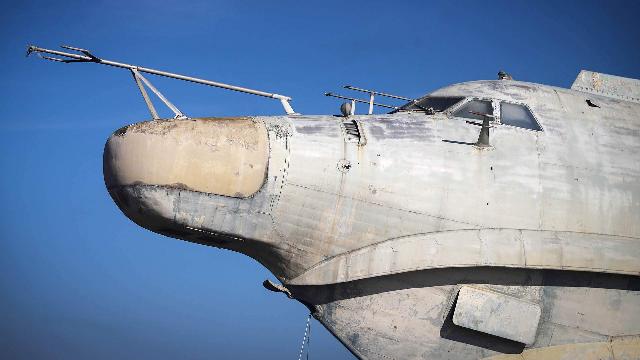The Soviet Union was the first to develop this kind of technology
China has begun testing combat ekranoplanes. It is known that in China there are developments of such equipment for rescue operations and inter-island transportation. Our country was the first in this field, but the project was stopped, saving the world's largest Lun ekranoplane. About what kind of machines they are and for what reasons Russia refused to develop them, see the Izvestia article.
How China is developing new ekranoplanes
Photos of a new Chinese aircraft have appeared online in the Bohaiwan Bay in the western part of the Yellow Sea. Experts are divided in their opinions: some believe that this is a new seaplane, while most believe that it is an ekranoplane.
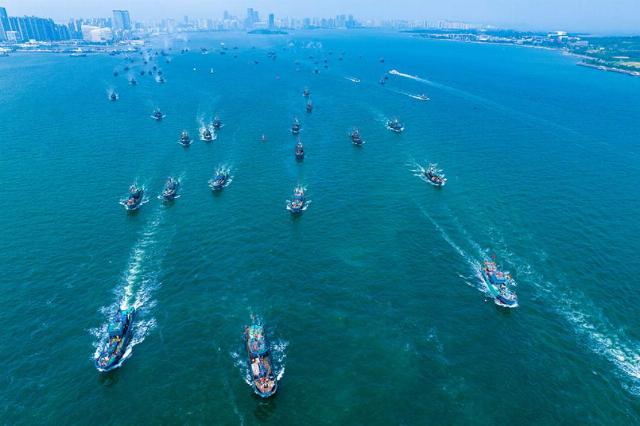
Photo: TASS/VCG
Image source: iz.ru
Very little is known about him. So, it is painted in an inconspicuous gray color, which hints at possible military use. The device has an overall T-shaped tail with two vertical stabilizers and a relatively short wingspan, on which four jet engines are mounted. The wingtips are designed as full-size floats that protect the aircraft from excessive roll. The tail unit includes V-shaped fins and an overhead stabilizer. Any technical data — length, width, and so on — is not known.
It is known that China has been developing ekranoplanes in recent years. So in 2023, the Chinese Shipbuilding Research Center presented a prototype ekranoplane for rescue operations and inter-island transportation in the South China Sea.
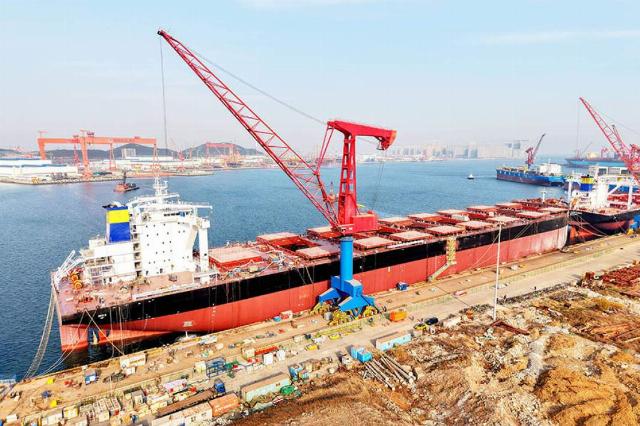
Photo: TASS
Image source: iz.ru
Since the name of the new aircraft is not yet known, it has received the name "Boho monster" in the world press.
What is an ekranoplan in general?
An ekranoplane (a dynamic hovercraft) is a vehicle for moving above the surface, maintained in the atmosphere by interacting with air reflected from the surface of the earth or water (the so—called screen effect). An aerodynamic shield is formed when the wing moves at a relatively small (up to several meters) height from the surface of water, land, snow or ice. Thus, an ekranoplane is something that combines a ship and an airplane.
The on-screen moment itself was discovered in the 1920s. Various scientists tried to implement it as a basis for their developments, but no one really succeeded, except the great Soviet scientist Rostislav Alekseev. He was always interested in ideas to increase the speed of movement on the water and various advanced scientific innovations in this field. The film dedicated to him is called "Overtaking Time." He and his engineers worked on gliders, hydrofoils, air-cavernous vessels and, of course, ekranoplanes.

Rostislav Alekseev
Image source: Photo: TASS/Gromov
At the same time, the Soviet leadership was also interested in technical innovations. The first experimental flights of ekranoplanes in the early 1960s made a good impression on the top officials of the Soviet state and navy. Alekseev was given the green light. The military, in particular, was attracted by the high speed, which made it possible to quickly and suddenly transfer units to the enemy shore, and the ability to fly over the surface of the water led to the immunity of this technique to minefields and anti-amphibious barriers. In addition, flying at an altitude of several meters above water helps to remain virtually invisible to most radars and air defense systems.
Why do China need ekranoplanes?
China has a number of problems, the solution of which can be realized with the help of military force.
The main thing is the return of Taiwan to its membership. Taiwan itself is a group of 168 islands, some of which are located within visual range of mainland China. The width of the Taiwan Strait ranges from 130 to 220 km. If the PRC decides to conduct a military operation, it will be necessary to transfer as many first-wave attack aircraft as possible across the strait as quickly as possible to create bridgeheads, destroy or block government and military command posts, block and eliminate military installations. It is also possible that soldiers and military equipment will be landed on the islands of the Ryukyu Archipelago and the islands of the northern Philippines to create military bases to isolate the combat area and prevent the approach of US Navy forces.
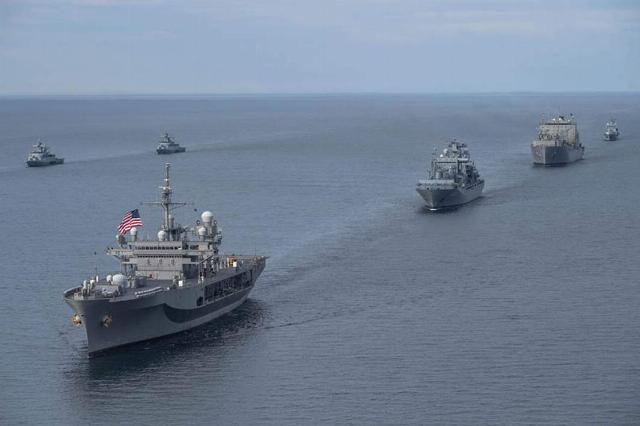
Photo: TASS/Zuma
Image source: iz.ru
In this case, the ekranoplane can act as a high-speed means of delivering troops and military equipment during the first assault operations. It is worth noting that China has a fleet of small amphibious hovercraft of the Zubr type, is actively developing a fleet of universal amphibious assault ships, is creating ferry ships to facilitate the disembarkation of equipment from roller ships, and is developing other areas. That is, the Chinese army is preparing to conduct such an amphibious operation.
Another problem remains the presence of a large number of disputed islands in the South China Sea, for example, in the Spratly Archipelago. China has converted a number of small pieces of land into bulk islands, created ports and air bases on them. If necessary, the ekranoplanes can quickly transfer troops, equipment and cargo to such islands.
Russia is the birthplace of the "Caspian Monster"
At one time, the Soviet Union was a pioneer in the development of ekranoplanes. In 1966, a prototype of the KM ekranoplane ("Mock-up Ship") was launched into the Caspian Sea. Before the An-225 Mriya, it was the heaviest aircraft in the world. After seeing satellite images of this miracle, Western intelligence called it the "Caspian Monster." Unfortunately, in 1980, the Monster crashed and sank.
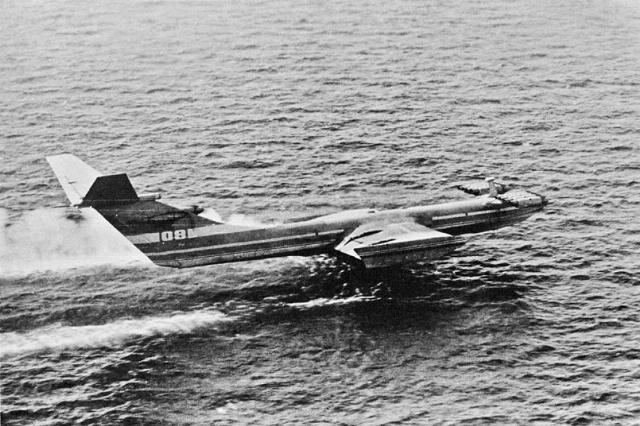
The Caspian Monster ekranoplane
Image source: Photo: TASS
In 1972, a new amphibious ekranoplane A-90 "Eaglet" was put to the test, capable of transferring up to 200 armed marines at a speed of 400 km/h over a distance of 1,500 km. And already in 1974, the serial production of "Eaglets" began. A total of 24 such machines were planned to be produced, but only five ekranoplanes were actually built, of which one ship was intended for static testing. The remaining flying ekranoplanes received factory numbers C-21, C-25 and C-26 and the first flight prototype C-23 (scrapped after the accident).
The first production C-21 ekranoplane entered state testing on October 5, 1979, and on November 3, the flag of the USSR Navy was raised on it. According to the military classification, it was called a "small amphibious assault ship."
Meanwhile, the Lun Project 903 ekranoplane missile carrier, armed with six Moskit anti-ship missiles, was under construction.
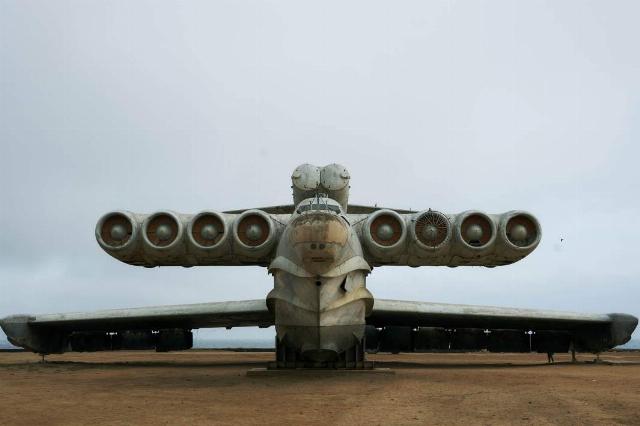
Soviet Project 903 Lun attack ekranoplan missile carrier
Image source: Photo: RIA Novosti/Alexey Danichev
In May 1989, the Lun-type ekranoplane construction program was revised downwards. It was supposed to build only two vehicles: in rocket-carrying and rescue versions. An experienced, and also the last, flight of the rocket ekranoplane took place in the summer with live firing of the Moskit anti-ship missile system in flight and afloat. In December of the same year, he was included in the air group. The main disadvantage of the device was the inability to "go ashore" on its own, therefore, a floating dock was required for its basing.
However, as a result, the general reduction in allocations for the Armed Forces in particular and the collapse of the USSR as a whole led to the curtailment of plans for the construction and development of these and currently promising combat vehicles. After the C-21 ekranoplane crash on 28.08.1992, the rest of the aircraft were grounded. The only remaining Eagle-type ekranoplane is located on the territory of the Naval Museum in Moscow on the shore of the Khimki Reservoir. The rest, alas, have long been disposed of.
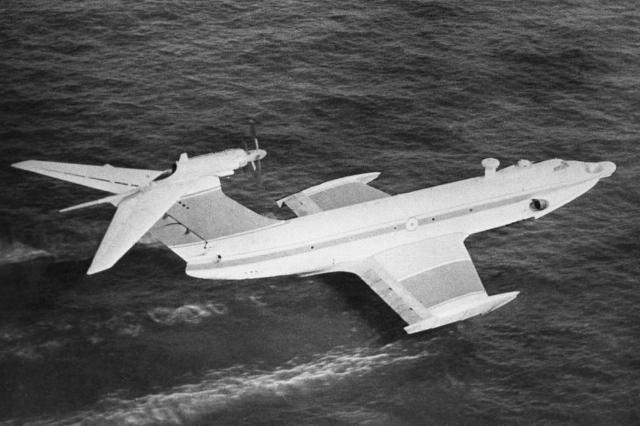
Russian Eaglet-type ekranoplane
Image source: Photo: RIA Novosti
The Lun rocket ekranoplane was also saved. For quite a long time, he stood on the territory of a military unit in Kaspiysk. On July 31, 2020, it was towed by sea to the shore of Derbent, thereby completing a complex navigation and engineering task. Later, the ekranoplane was pulled ashore, and currently the Lun is under repair to become part of the exposition of the future local Patriot park. The second Lun-type ekranoplane is still being completed in a rescue version according to Project 9037 at the Volga plant in Nizhny Novgorod, where all other ekranoplanes were built. His future is not yet clear.
Thus, the topic of the development of heavy ekranoplanes for military purposes in our country has been put on pause for the time being.
We haven't lost our technology priority right now. The Russian Federation has all the necessary competencies to work on the creation of ekranoplanes. But such work has now moved to the civilian sphere. If something is created that really flies and is used in the national economy, it will probably be civilian ekranoplanes after all. The Ministry of Defense has not yet allocated resources to create a fleet of such devices. This direction is still waiting in the wings. But it may well be that this is due, in principle, to a change in the approach to the development of the Navy, which we are currently witnessing.
Dmitry Boltenkov
Roman Kretsul
